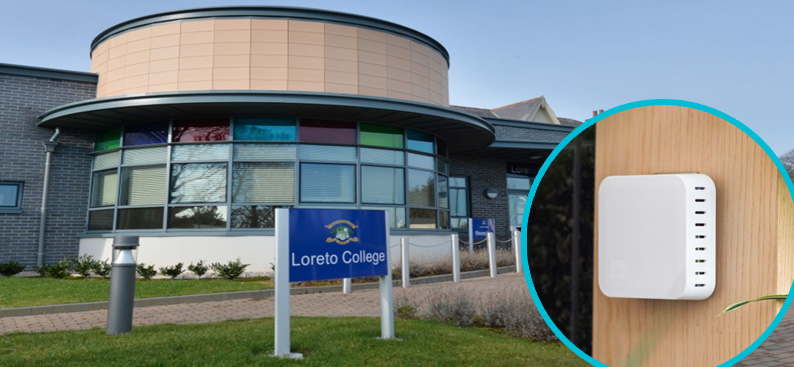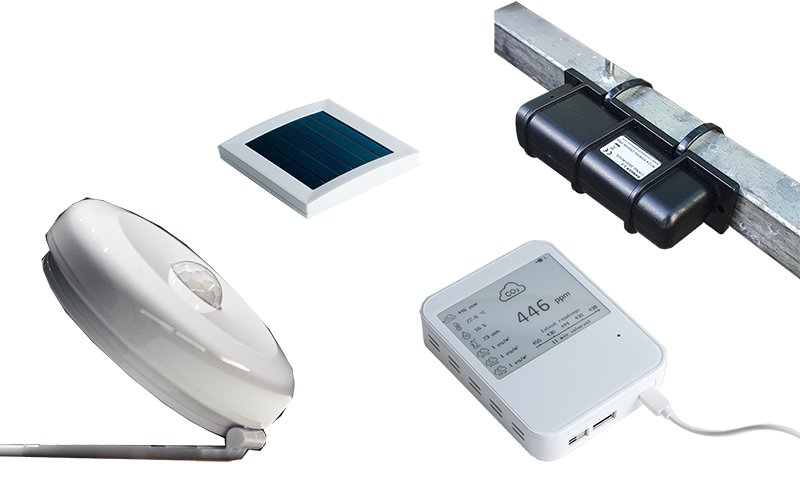Indoor Air Quality (IAQ) Monitoring
The right ventilation and air quality has never been more important for workplace health &wellness, safety, productivity and energy efficiency.
Continuous monitoring of environmental conditions such as temperature, humidity and CO2 levels is essential to effective management of more sustainable, ESG compliant buildings.
- Battery powered IoT Sensors & Devices
- Simple IoT Management Platform & Dashboard
- Wireless Secure, energy efficient IoT connectivity services
What can be more important than the air we breathe?
Connected Invention’s IoT data solutions monitor, collect and display real-time data enabling the right decisions at the right time to maintain a healthy and productive environment where we live, learn and work.
up to 61 %
higher cognitive function scores in green-certified buildings (Harvard T.H. Chan School of Public Health)
up to 90 %
of people’s time is spent indoors
Indoor air pollution is ranked as one of the
TOP FIVE
ENVIRONMENTAL RISKS to public health (EPA)
It is real, according to neefusa.org: Some common indoor air pollutants that threaten indoor air quality include: lead, dust mites, mold, radon, pests, carbon monoxide, pet dander, mold, and second hand smoke.
To make matters worse, climate change, including increased humidity and precipitation, can exacerbate indoor air pollution by promoting mold growth indoors and increasing dust mites, bacteria, and other bio contaminants.
Indoor air pollutants can cause immediate effects, such as irritation of the eyes, nose, and throat, headaches, dizziness, fatigue, and aggravated or worsened asthma symptoms among asthmatics.
Long-term effects are also possible, due to chronic exposure to indoor air pollutants. These effects may include respiratory diseases, heart disease, and cancer.
End-to-end Indoor Air Quality Monitoring in 3 Simple Steps
Indoor Air Data Monitoring collects and shares-vital data to augment and enhance your building system management systems and maintenance processes to reduce energy consumption, maintain an ideal tenant environment.
IoT data insights are key to striking the right balance between the need to manage a healthy and cost-efficient environment while safeguarding the value of your property.
Connected Insight’s device and data management services and wireless connectivity portfolio are optimised for Building & Facility Management and designed to integrate easily with your existing infrastructure.
Operations can achieve efficiencies and energy cost savings without compromising on air quality standards and ESG objectives.
 Transparency
Transparency
Access to data when and where you need it
AirWits Insights helps you collect, visualise and report important data points for reporting and stakeholder management.
Having a single access point to all your IoT data simplifies analysis over time and informs fact-based decisions for optimised energy consumption.
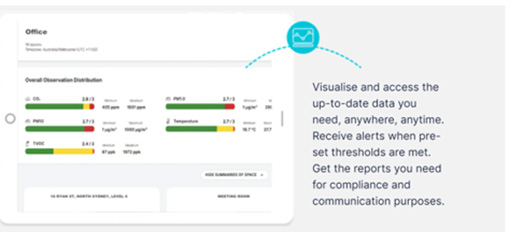
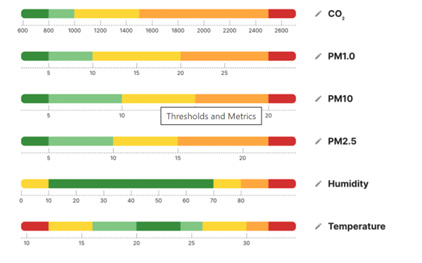
 Smart Monitoring
Smart Monitoring
Threshold and metrics
From predetermined thresholds by experts from the World Health Organization to configuring values that your requirements, you have control at your fingertips.
Adjust data intervals and set triggers for your building management systems to maintain optimal readings. Automating your building management systems in also possible.
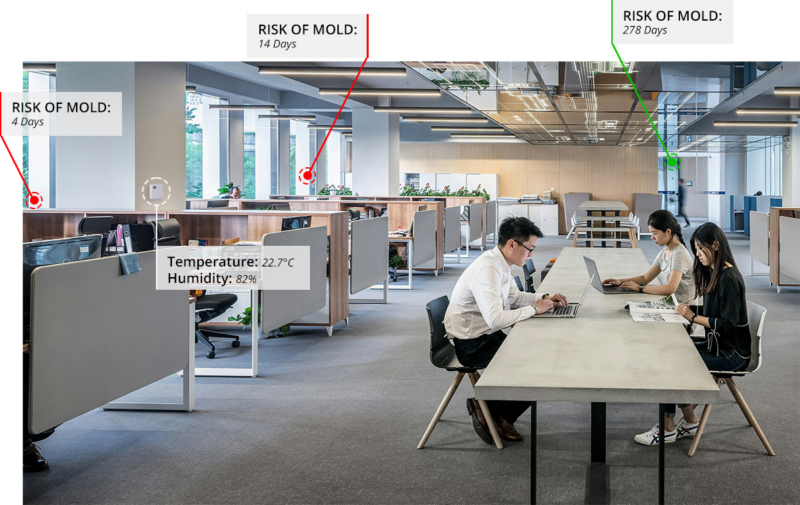
Mold Risk Detection – Prevent the Problem.
An innovative solution to proactively detect Mold Risk in indoor areas.
Our approach utilises a sophisticated formula applied to continuous temperature and humidity data collected by our IoT devices. The result is a precise risk indicator that assesses the probability of mold occurrence.
The solution offers:
Detailed Risk Scale: A detailed scale of risk factors for mold occurrence allowing you to take targeted preventive measures.
Predictive Analysis: Anticipate and plan ahead with the predictive capability that forecast the number of days it would take for mold to emerge based on current conditions
Customised Alerts: Stay informed and notified with Alerts tailored to your preferences ensuring timely actions when parameters are triggered.
You don’t have to wait for mold to become a problem. Benefit from proactive detection and prevention with Connected Inventions’ Mild Risk feature embedded into our IAQ solution.
What can be measured
Carbon Dioxide
- Indicates inadequate ventilation and increased risk of virus transmission
- Impact on cognitive performance and productivity
- Exposure may cause headaches, drowsiness, higher bloodpressure and more
Temperature
- Impacts occupant comfort, well-being and productivity
- Promotes moisture-related issues such as condensation and humidity fluctations
- Vital data to omptimise energy consumption and cost efficiency
Humidity
- Indicates transmission risks or airborne viruses
- Indicates risks of mold or mildew growth to protect occupant health and building materials such as timber, metal and concrete
- Impacts structural health of buildings
Particle Matter
- Exposure to unhealthy levels may increase risk of health problems like respiratory conditions such as asthma and trigger allergic reactions.
- Impacts sensitive materials such as calcareous building stones and ferrous metals (mass, proposity, embrittlement)
TVOC
- Total Volatile Organic Compounds (TVOC) are a group of chemicals found in building materials and everyday products.
- Contributor to poor indoor air quality and hazardous environment. Increased exposure may cause headaches, and irritations to eyes, nose, and throat.
AIR PRESSURE
- Balancing external and internal air pressure impacts building’s structural integrity and is vital to optimise energy efficiency.
- Differential air pressure influences airflow patterns, infiltration/exfiltration rates, energy consumption and ventilation effectiveness.
Benefits of IoT Indoor Air Quality Monitoring
Unlock a new level of efficiency and productivity for office workspaces with IoT data-enabled workspace management.
Create an agile workspace and streamlined operations.
Health and Well-being: Real-time monitoring enables detection of harmful pollutants allowing for prompt action to maintain a healthy environment.
ESG (Environmental, Social and Governance): Automated monitoring and reporting process. Enhance reputation, attract environmentally conscious tenants and contribute to achieving ESG goals while enabling significant reductions in energy consumption
Performance and Productivity: A healthy indoor space positively impacts cognitive function, concentration and decision making.
The Benefits are Proven
Increase Cognitive Performance
and Productivity
Maximise comfort while
minimising energy cost
Promote health and wellbeing
and meet ESG obligations
Detect pollutants, reduce transmission risks
Case Study: Discover what you can achieve
See how our secure, cost- and energy efficient IoT data services empower building & facilities management to optimise indoor air conditions for a healthy, productive and comfortable space to work and learn.
Proven IoT Device & Sensor optimised for Facilities Management
Certified and proven to meet Green Building Standards
WELL
LEED
RESET
BREEAM
Connected Inventions | Customers & Partners





